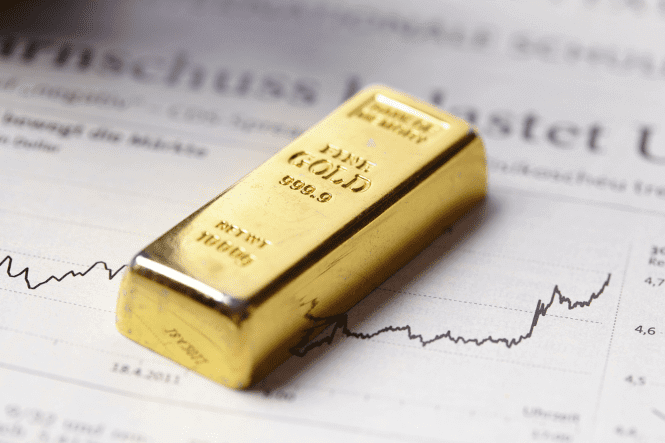Source: Reuters
Summary: Gold prices dipped slightly after reaching a new high in the last week of August. Investors took gains and prepared for the Federal Reserve's interest rate decision. The price of gold might fall in the near future if the Fed doesn't hint at a significant rate cut.
Key points
- The ongoing Israel-Iran-Hamas crisis is driving less risky currency pairs, supporting gold demand and potentially offsetting some of the downward pressure from gain-taking and interest rate expectations
- Despite record-high prices, Chinese banks have received new gold import quotas, indicating continued strong demand for physical gold
- Other metals like Silver, platinum, and palladium also experienced price fluctuations, with silver and platinum showing gains while palladium declined
Market impact
Investor sentiment
Overall, investor sentiment towards the global economy and financial markets can also influence gold prices. If investors become more risk-averse and seek less risky assets, gold may experience increased demand. Conversely, investors more optimistic about the economic outlook may be less inclined to hold gold, leading to a potential price decline.
USD currency fluctuations
Changes in currency exchange rates can affect the price of gold, as it is often priced in US Dollars. A weaker Dollar can make gold more attractive to foreign investors, potentially driving up prices. For instance, if the US Dollar weakens against other major currencies, foreign investors may find it more advantageous to purchase gold as a hedge against inflation and currency devaluation.
Federal Reserve Monetary Policy
There is a 77.5% chance of a 25 basis point rate cut in September 2024. If the Fed decides on a smaller-than-expected rate cut, gold prices could face downward pressure due to a stronger US Dollar and increased borrowing costs. This could lead to a sell-off in the gold market.
What do experts say about the gold price dip?
Giovanni Staunovo, UBS Analyst, said, "Gold could rise further in the coming months, likely reaching $2,600/oz by end-year. All eyes will be on any indication of an imminent rate cut from Powell." Staunovo's statement highlights the potential for a further uptrend in gold prices, driven by expectations of a rate cut from the Federal Reserve. Investors are closely watching the central bank's monetary policy decisions, as lower interest rates can weaken the US Dollar and make gold more attractive as a non-interest-bearing asset.
Reuters technical analyst Wang Tao also mentions, "Gold may fall into the $2,479-$2,487 range following its failure to break resistance at $2,507." This indicates that exit pressure may be at the current price level, potentially leading to a temporary decline.
Future outlook
- Short-term consolidation or pullback: David Meger suggested that short-term consolidation or pullback in gold prices is possible, especially if the Federal Reserve's interest rate decision disappoints investors. A smaller-than-expected rate cut or a lack of a clear signal for future easing could lead to a decline in gold prices
- Continued uptrend: UBS analyst Giovanni Staunovo's forecast of gold reaching $2,600/oz by the year's end suggests a continued uptrend is possible. This bullish outlook is driven by expectations of a rate cut from the Federal Reserve and ongoing geopolitical tensions
- Volatility and uncertainty: The gold market is likely to remain volatile in the coming months. The uncertainty surrounding different economic and geopolitical factors could lead to fluctuations in gold prices
- Technological advancements: Technological advancements in the gold mining and refining industries could impact the supply of gold. For example, if new mining techniques make it more efficient or cost-effective to extract gold, the supply may increase, potentially leading to lower prices
Insights for traders
Be mindful of volatility
Gold prices can be highly volatile, especially during periods of geopolitical uncertainty or economic turmoil. Traders should be prepared to manage risk and avoid making impulsive decisions based on short-term price movements.
Consider hedging strategies
Traders may want to consider using hedging strategies to protect their positions against potential price declines. This could involve shorting gold futures or options to offset the risk of a price drop.
Stay updated on regulatory changes
Changes in government regulations or policies related to gold can impact the market. Traders should stay informed about any new regulations that may affect gold prices.
Insights for investors
Dollar-cost averaging
A Dollar-cost averaging strategy involves investing a fixed amount in gold at regular intervals, regardless of the price. This can reduce the impact of volatility and potentially lower the average cost of the investment.
Consider gold ETFs
Exchange-traded funds (ETFs) that track gold prices offer a convenient and liquid way to invest in gold without physically owning the metal. ETFs can be traded on stock exchanges and are often subject to lower fees than physical gold.
Long-term perspective
Gold is often considered a long-term investment. Short-term price fluctuations shouldn't overly influence traders. Focus on the long-term fundamentals of the gold market.
Conclusion
While recently hitting a record high above $2,500, gold prices have pulled back slightly. This could be the beginning of a short-term consolidation or pullback, as some analysts predict a decline towards the $2,479-$2,487 range. This potential downturn hinges on the Federal Reserve's upcoming monetary policy decisions. However, counterbalancing forces, such as geopolitical tensions, particularly in the Middle East, drive the less risky purchase of gold.
Trade smarter with low spreads and lightning-fast executions. Open a live account today and experience unparalleled support from our dedicated customer service team. Blueberry is here to help every step of the way!
Trade Now Open a Demo Account
